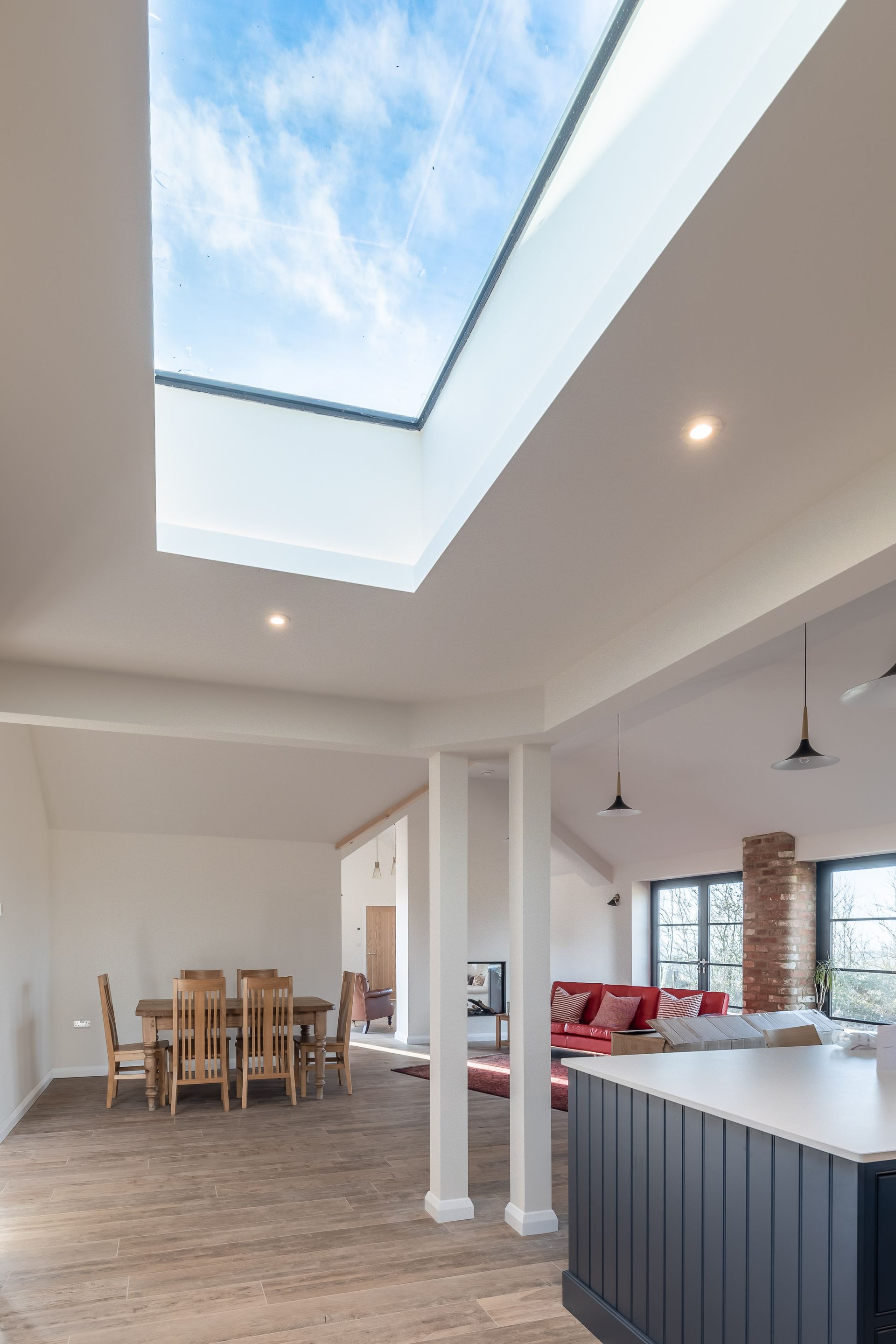The Importance Of Natural Daylight in Our Homes
In the hustle and bustle of modern life, surrounded by artificial lighting and the glow of electronic devices, the significance of natural daylight often goes unnoticed. However, research has consistently shown that exposure to natural light plays a pivotal role in promoting both mental and physical health. From enhancing mood and productivity to regulating sleep patterns and supporting overall well-being, the benefits of basking in the sunlight are manifold.
The Circadian Rhythm and Its Connection to Natural Light
At the core of the relationship between natural daylight and our well-being is the circadian rhythm, our body's internal clock that regulates various physiological processes. Natural light, particularly sunlight, serves as a powerful cue for the circadian rhythm, helping to synchronise our biological clock with the natural day-night cycle.
Exposure to daylight in the morning has been linked to improved mood and alertness, as it signals to the body that it's time to be awake and active. This synchronisation is crucial for maintaining a healthy sleep-wake cycle, as exposure to natural light during the day helps regulate the production of melatonin, the hormone responsible for sleep.
Sunlight and Mental Health: A Bright Connection
The impact of natural daylight on mental health is profound. Sunlight triggers the release of serotonin, a neurotransmitter associated with mood elevation and a sense of well-being. Low levels of serotonin are often linked to conditions such as depression and seasonal affective disorder (SAD). Increased exposure to natural light, especially during the winter months when daylight hours are shorter, can be an effective strategy in managing and preventing these mood disorders.
Moreover, natural light has been found to enhance cognitive performance and productivity. Research suggests that individuals working in environments with ample natural light report higher job satisfaction, increased concentration, and a more positive outlook. The simple act of incorporating daylight into workspaces has the potential to revolutionise the way we approach productivity and mental well-being in the workplace.
Physical Health: The Sunshine Vitamin and Beyond
Beyond mental health, natural daylight is also closely linked to various aspects of physical well-being. One of the most well-known connections is the synthesis of vitamin D, often referred to as the "sunshine vitamin." Exposure to sunlight is a natural and efficient way for our bodies to produce vitamin D, which is essential for bone health, immune function, and overall vitality.
Insufficient exposure to natural light has been associated with a range of health issues, including vitamin D deficiency, which has been linked to conditions such as osteoporosis, cardiovascular diseases, and a weakened immune system. Encouraging outdoor activities and ensuring adequate exposure to sunlight are crucial for maintaining optimal vitamin D levels and preventing associated health risks.
Moreover, natural light has been shown to have a positive impact on the regulation of hormones such as cortisol, which plays a role in stress response, and serotonin, as mentioned earlier. These hormonal interactions contribute to an overall sense of balance in the body, promoting physical health and resilience.
Designing Spaces with Well-being in Mind
Recognising the profound impact of natural daylight on mental and physical health, architects and designers are increasingly incorporating strategies to maximise natural light in building design. The concept of biophilic design, which seeks to connect people with nature within the built environment, emphasises the importance of incorporating natural elements, including daylight, into spaces.
Large windows, skylights, and open floor plans are examples of design elements that facilitate the penetration of natural light into indoor spaces. This not only reduces the reliance on artificial lighting but also creates environments that are more conducive to well-being. Hospitals, schools, and office buildings are among the spaces where such design principles are being implemented to enhance the health and productivity of occupants.
The Role of Nature in Healing Environments
In healthcare settings, the importance of natural daylight is being recognised as a critical component of healing environments. Patient rooms with access to natural light have been associated with faster recovery times, reduced pain perception, and lower stress levels. Integrating nature into healthcare design, such as providing views of outdoor landscapes, further contributes to the therapeutic benefits of natural light.
Similarly, educational institutions are adopting designs that prioritise natural daylight to create optimal learning environments. Studies have shown that students in classrooms with ample natural light perform better academically and exhibit improved behaviour compared to those in poorly lit spaces. This highlights the potential of daylight not only in enhancing cognitive function but also in positively influencing social and behavioural aspects.
Conclusion: Illuminating a Path to Holistic Well-being
As our lives become increasingly entwined with technology and indoor activities, the importance of reconnecting with the natural world, especially through exposure to natural daylight, cannot be overstated. The profound impact on both mental and physical health highlights the need for a holistic approach to well-being that includes intentional strategies to incorporate natural light into our daily lives.
From the regulation of circadian rhythms to the synthesis of essential vitamins and the promotion of positive mental states, natural daylight emerges as a powerful and accessible tool for enhancing our overall health. As we strive to create environments that support well-being, whether at home, in the workplace, or in healthcare and educational settings, prioritising access to natural light should be a fundamental consideration. Embracing the healing rays of the sun is not just a matter of aesthetics; it is a commitment to nurturing a healthier, happier, and more resilient society.
In the quest for a healthier and more balanced lifestyle, individuals can take proactive steps to incorporate natural daylight into their homes. Simple practices such as taking breaks in well-lit areas, and arranging living or workspaces to maximise exposure to sunlight can make a significant difference. This is where the introduction of light from above, via rooflights or roof windows is crucial.
Cultivating a conscious awareness of the benefits of natural light empowers individuals to prioritise their well-being in an increasingly indoor-centric world. As we navigate the demands of modern life, let us not overlook the transformative potential of something as simple yet profound as basking in the warmth and brilliance of natural daylight – a beacon guiding us toward a brighter and healthier future.






